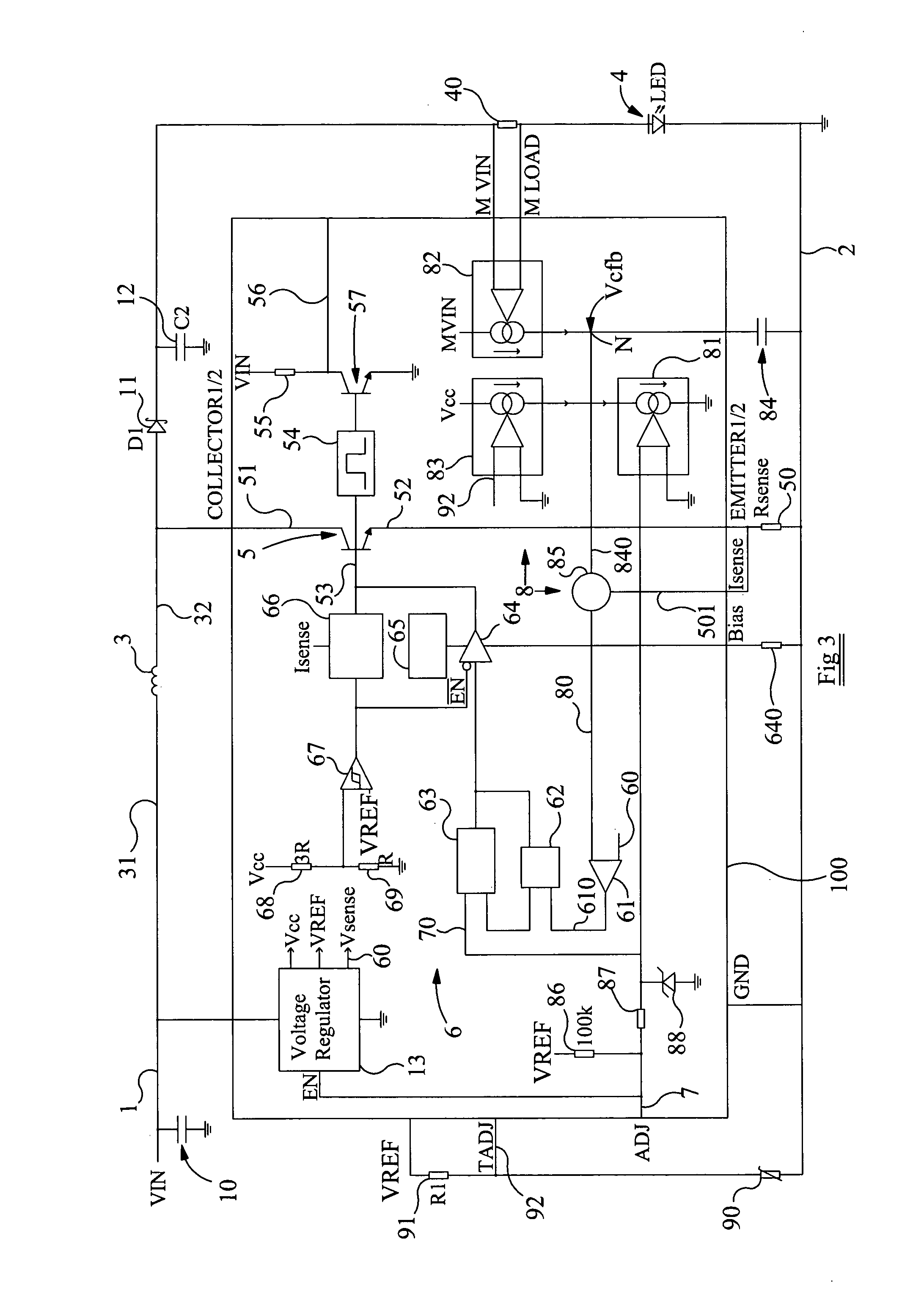Current driving method and circuit
- Summary
- Abstract
- Description
- Claims
- Application Information
AI Technical Summary
Benefits of technology
Problems solved by technology
Method used
Image
Examples
Embodiment Construction
Of Embodiments Of The Invention
[0116]Referring now to FIG. 3, this shows a circuit embodying the invention, which can also be described as a drive circuit embodying the invention, arranged to drive a load 4. The circuit comprises a first supply rail 1 and a second supply rail 2 for connection to a dc power supply, providing a supply voltage Vin. An input capacitor 10 is connected between the supply voltage input and ground. An inductor 3 (L1) has a first inductor terminal 31 connected to the first supply rail 1, and has a second inductor terminal 32. A load 4 is connected in series with load current monitor resistor 40 (RM) between the second inductor terminal 32 and the second supply rail 2. In series with the load 4 is a diode 11, and an output capacitor 12 is connected in parallel with the load and RM, between the diode 11 and ground. In this embodiment the load 4 is a 3 W LED. The circuit also comprises a controllable switching device, in the form of a bipolar transistor 5, and ...
PUM
 Login to View More
Login to View More Abstract
Description
Claims
Application Information
 Login to View More
Login to View More - R&D
- Intellectual Property
- Life Sciences
- Materials
- Tech Scout
- Unparalleled Data Quality
- Higher Quality Content
- 60% Fewer Hallucinations
Browse by: Latest US Patents, China's latest patents, Technical Efficacy Thesaurus, Application Domain, Technology Topic, Popular Technical Reports.
© 2025 PatSnap. All rights reserved.Legal|Privacy policy|Modern Slavery Act Transparency Statement|Sitemap|About US| Contact US: help@patsnap.com



